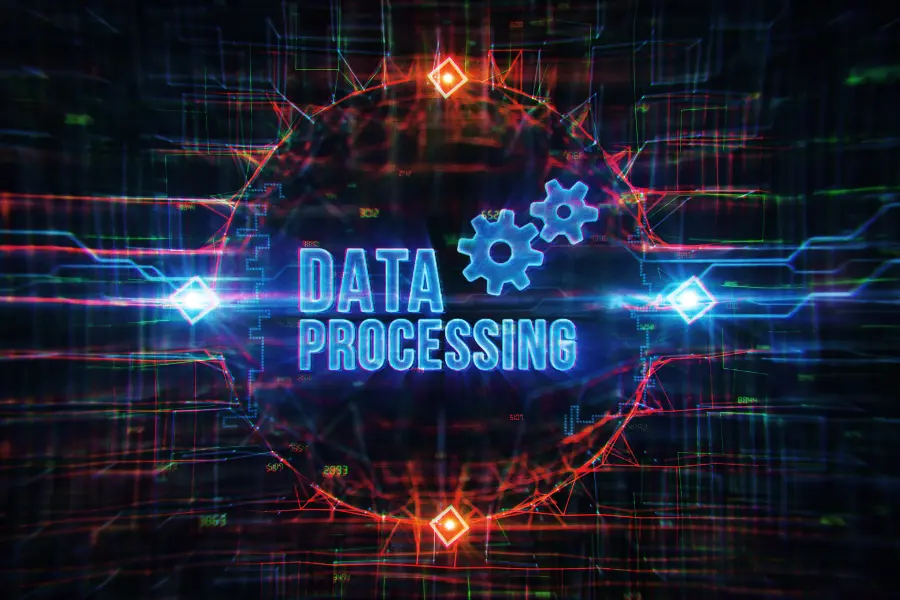How Python Enhances Real-Time Data Processing in IoT Applications
Python has emerged as a versatile and powerful programming language for real-time data processing in Internet of Things (IoT) applications. Its extensive ecosystem of libraries, ease of IOT integration techniques with hardware, and support for asynchronous programming make it well-suited for handling the complexities of real-time data streams from IoT devices.

Main Advantages of Python in Real-Time Data Processing
- 1. Rich Library Ecosystem: Python offers a wide range of libraries that facilitate data manipulation, analysis, and visualization. Key libraries include:
- NumPy and Pandas: For efficient data handling and manipulation.
- SciPy: For scientific and technical computing tasks.
- TensorFlow and PyTorch: For machine learning and deep learning applications in real-time analytics.
Asyncio and Twisted: For asynchronous programming, enabling concurrent tasks handling without blocking the main program flow.
- 2. Ease of Integration: Python's simplicity and readability simplify integration with various IoT devices and protocols. Libraries like paho-mqtt for MQTT communication and pyserial for serial device communication are widely used in IoT projects.
- 3. Support for Asynchronous Programming: Asynchronous programming in Python, supported by asyncio, allows developers to handle multiple tasks concurrently. This is essential for processing real-time data streams efficiently and ensuring responsiveness in IoT applications.
- 4. Data Visualization: Python's Matplotlib, Seaborn, and Plotly libraries enable real-time visualization of data. Visualization is crucial for monitoring IoT sensor data and gaining insights into trends and anomalies.
- 5. Scalability: Python's ability to run on various platforms and its support for distributed computing frameworks like Dask and PySpark make it scalable for processing large volumes of IoT data across multiple devices.
Implementing Real-Time Data Processing with Python in IoT
- Data Collection: Python scripts can collect data from sensors, actuators, and IoT devices using communication protocols such as MQTT, CoAP, or HTTP.
- Data Preprocessing: Using pandas and numpy, Python preprocesses raw sensor data by handling missing values, outliers, and performing data normalization.
- Real-Time Analysis: Python's machine learning libraries (TensorFlow, scikit-learn) enable the implementation of predictive models and anomaly detection algorithms for real-time analytics on incoming IoT data streams.
- Event-Driven Architecture: Python frameworks like Flask and Django Channels support building event-driven IoT applications. These frameworks enable actions to be triggered based on real-time events or updates from IoT sensors.
- Edge Computing: Python can run on edge devices like Raspberry Pi, enabling local data processing closer to where data is generated. This reduces latency and bandwidth consumption in IoT deployments.
Real-World Applications
- Smart Home Automation: Python facilitates real-time monitoring and control of smart home devices such as thermostats, lights, and security systems.
- Industrial IoT (IIoT): Python supports real-time analytics for monitoring equipment performance, predicting failures, and optimizing manufacturing processes.
- Environmental Monitoring: Python-based IoT applications analyze real-time data from environmental sensors to detect pollution levels, weather patterns, and climate changes.
Challenges and Considerations
- Latency: Achieving low latency in real-time data processing requires optimizing algorithms and minimizing processing times.
- Security: Implementing robust security measures is crucial to protect sensitive IoT data and devices from cyber threats.
- Scalability: Python-based IoT applications need to be designed with scalability in mind to handle increasing data volumes and device connections.
Conclusion
Python for IoT Solutions has tools for developing real-time data processing in IoT applications. Python is a versatile programming language with extensive tools, libraries, and frameworks for asynchronous programming capabilities. IoT systems are strong, efficient, scalable, and responsive after integration with Python tools. IoT systems across various industries, including industrial applications, have enhanced operational efficiency with Python.
Check out our next resource topic on how to enhance IoT security with Python.
Active Events
From Zero to Hero: The Untold Secrets of Becoming a Full Stack Developer
Date: Aug 06, 2025 | 7:00 PM(IST)
7:00 PM(IST) - 8:10 PM(IST)
2749 people have registered
3 Must Have Projects On your CV to Get into Data Analysis
Date: Aug 05, 2025 | 7:00 PM(IST)
7:00 PM(IST) - 8:10 PM(IST)
2753 people have registered
Your Data Science Career Game-Changing in 2024: Explore Trends and Opportunities
Date: Aug 08, 2025 | 7:00 PM (IST)
7:00 PM (IST) - 8:10 PM (IST)
2811 people have registered
Bootcamps
Data Science Bootcamp
- Duration:8 weeks
- Start Date:October 5, 2024
Full Stack Software Development Bootcamp
- Duration:8 weeks
- Start Date:October 5, 2024
